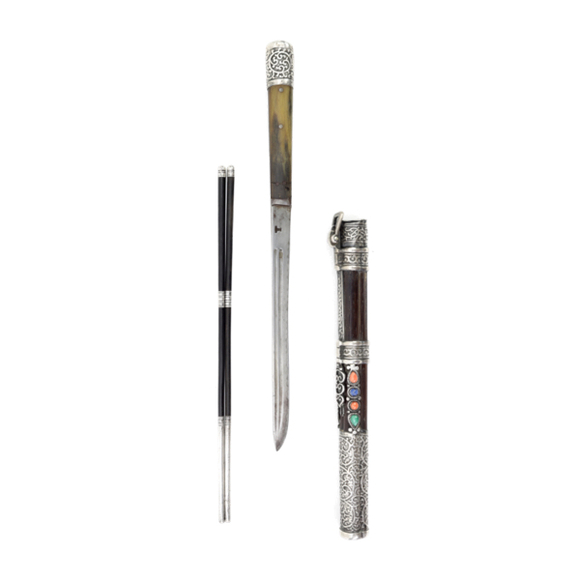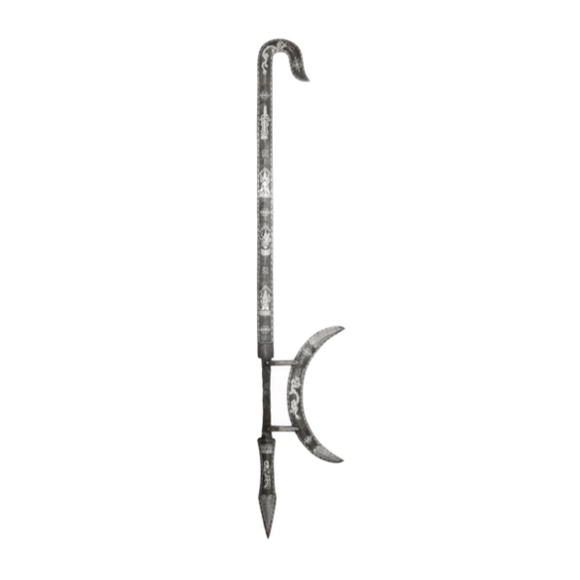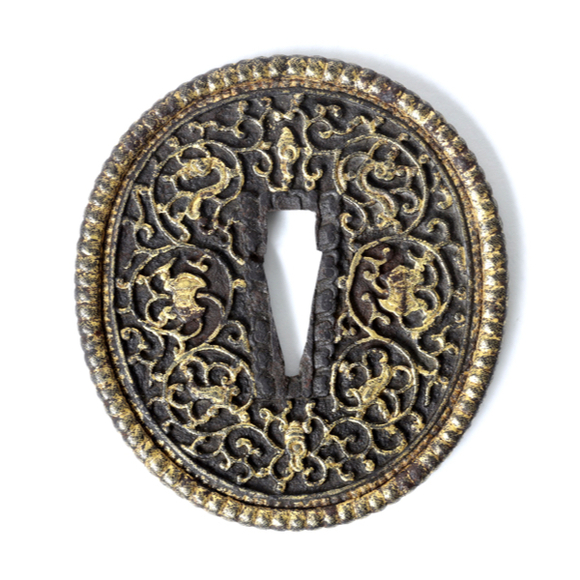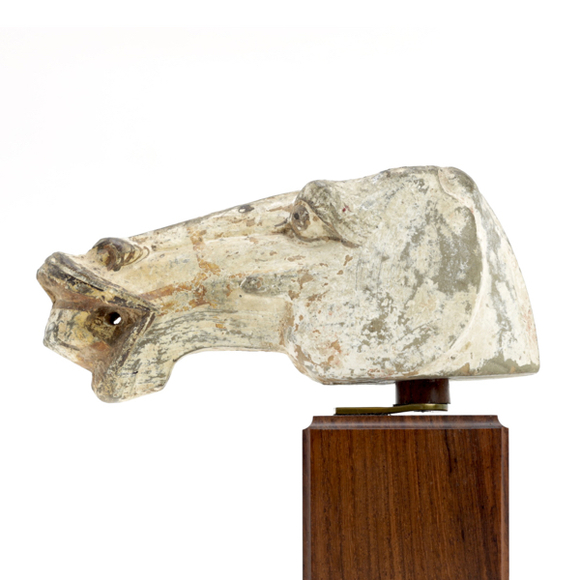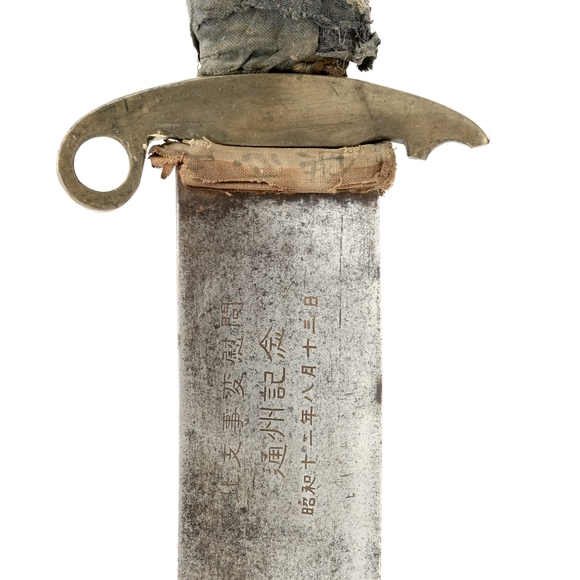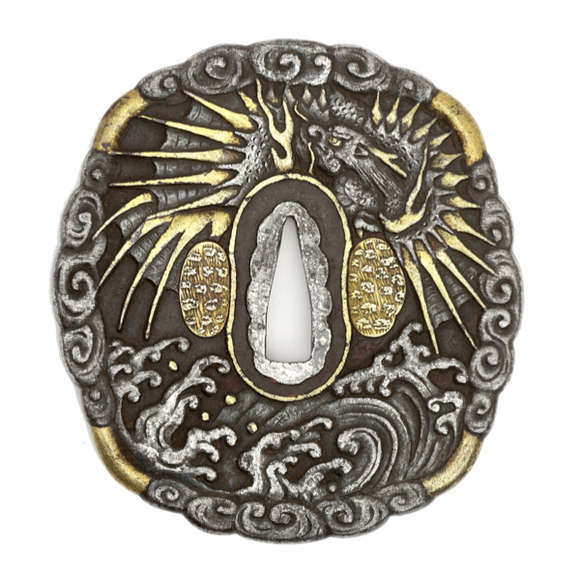Language: Mandarin Chinese
Source: Classical literature
Description
Ruǎn tiěbiān (軟鐵鞭) literally means "soft iron whip". It is the name of a Chinese iron fighting chain, consisting of a grip section, a number of segments and a weighted tip.1
 A ruǎn tiěbiān (軟鐵鞭) or "soft iron whip".
A ruǎn tiěbiān (軟鐵鞭) or "soft iron whip".
Anonymous private collection.
Historical ruǎn tiěbiān could weigh well over a kilo. Today, very light versions of such whips are still used in martial arts demonstrations. In modern use, they are often named after the number of sections, the most common being the jiǔ jié biān (九節鞭) or literally, "nine section whip".
I have seen antique examples with anywhere from three to thirteen segments, they tend to be uneven numbers.
Also see:
Tiěbiān (鐵鞭) or "iron whip"
Zhújié biān (竹節鞭) or "bamboo-sectioned whip"
Notes
1. Shàolín gùn fǎ chǎnzōng (少林棍法闡宗) or "Explanation of Shaolin Staff Methods" by Cheng Zongyou (程宗猷). Cheng Zongyou spent 10 years studying martial arts in Shaolin temple and learned Japanese sword fighting from Liu Yunfeng.

